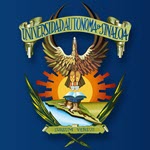Below is a summary of the abstract you submitted. Presenting author(s) is shown in bold.
If any changes need to be made, you can modify the abstract or change the authors.
You can also download a .docx version of this abstract.
If there are any problems, please email Dan at dar78@pitt.edu and he'll take care of them!
This abstract was last modified on March 18, 2024 at 4:06 p.m..

Bacteriophages infect and replicate within bacteria and can be found in almost any environment. The increasing recognition of their importance is due to their wide range of environmental and biotechnological applications. Therefore, it is important to understand the factors that can influence the sampling process for discovering phages. This will increase the chances of isolating them and allow for deeper studies about their diversity and potential applications. This study aimed to determine the optimal sampling conditions for successfully detecting phages in soil samples from the City of Culiacan, Sinaloa, Mexico. A total of 32 humid soil samples were collected in September and October 2023, and the presence of phages was analyzed concerning environmental temperature, sampling depth, collection time, and isolation method in Microbacterium foliorum host. Results showed that 40.6% of the samples tested positive for phages by at least one of the two isolation methods used. Of these, 28.1% and 31.2% of samples tested positive for phages using the direct and enriched isolation methods, respectively, while 18.7% of samples tested positive using both methods. The highest percentage of positive samples (53.8%) was found in October, while 46.1% were found in September. The average environmental temperature and sampling depth were 28.2°C and 5 cm, respectively, and the predominant collection time was 6:30 a.m. Analyzing the results by sampling month, 14 samples were collected in September, and 42.8% of them tested positive for phages. In October, 18 samples were collected, and 38.8% tested positive. The positive samples from both months had an average sampling depth of 4.2 cm and ambient temperature of 29.1°C, and 5.7 cm and 27.4°C, respectively. The most common collection time was 6:30 a.m. in September and 8:30 a.m. in October. Interestingly, one to three different plaque sizes were obtained per sample in September, indicating a possible greater diversity of phages compared to October, when only one plaque size was obtained per sample. In general, the majority of positive samples were found at temperatures between 26°C and 28°C, regardless of the sampling method used. However, there is a tendency to find phages at temperatures lower than 28°C when using the direct method, while the enriched method shows a decrease in the detection of phages in samples at temperatures higher than 30°C. The higher diversity of phages per sample was found at a temperature of 28°C and depths of 6 to 8 cm. On the other hand, at depths less than 6 cm, a greater number of positive samples were found, but with a lower diversity of phages. According to these findings, in Culiacan, Sinaloa, we suggest collecting humid soil samples at 6:30 a.m. in September with temperatures and depths lower than 28°C and 6 cm. This work provides valuable insights into optimizing phage sampling strategies, facilitating further exploring of their diversity and potential applications.
